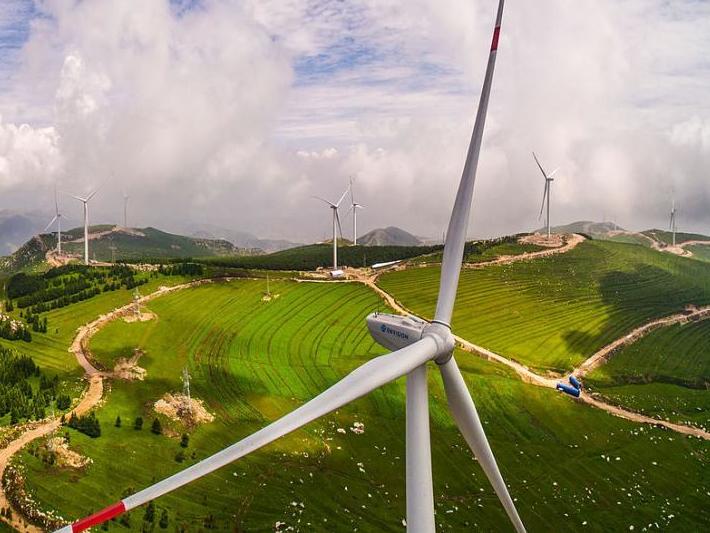Europe has space for enough wind turbines to power the entire world, study finds
Europe could create 100 times the energy it currently produces through onshore windfarms

Your support helps us to tell the story
From reproductive rights to climate change to Big Tech, The Independent is on the ground when the story is developing. Whether it's investigating the financials of Elon Musk's pro-Trump PAC or producing our latest documentary, 'The A Word', which shines a light on the American women fighting for reproductive rights, we know how important it is to parse out the facts from the messaging.
At such a critical moment in US history, we need reporters on the ground. Your donation allows us to keep sending journalists to speak to both sides of the story.
The Independent is trusted by Americans across the entire political spectrum. And unlike many other quality news outlets, we choose not to lock Americans out of our reporting and analysis with paywalls. We believe quality journalism should be available to everyone, paid for by those who can afford it.
Your support makes all the difference.Europe has enough space to create millions of wind turbines that could power the entire world until 2050, according to a new scientific analysis.
An international team of researchers say there is 4.9 million square kilometres of land – 46 per cent of Europe’s total land – that would be suitable for wind turbines, according to the paper published in Energy Policy.
Building 11 million additional wind turbines could create 497 exajoules of power which would supply the world’s energy needs until 2050 when there is expected to be a global demand of 430 exajoules.
Reaching this target would mean ramping up onshore wind power production by a factor of more than 100, scientists say. They say we need to drastically increase wind power to avert climate catastrophe.
“The study is not a blueprint for development but a guide for policymakers, indicating the potential of how much more can be done and where the prime opportunities exist,” said co-author Benjamin Sovacool, professor of energy policy at the University of Sussex.
“Our study suggests that the horizon is bright for the onshore wind sector and that European aspirations for a 100 per cent renewable energy grid are within our collective grasp technologically,” he said.
“Obviously, we are not saying that we should instal turbines in all the identified sites but the study does show the huge wind power potential right across Europe.”

Scientists analysed data from the European Copernicus satellite programme and wind speed atlases.
They also used Geographical Information System data to find areas that might not be suitable for a windfarm due to roads and restricted access for military or political reasons.
Peter Enevoldsen, assistant professor in energy technology at Aarhus University, said: “Critics will no doubt argue that the naturally intermittent supply of wind makes onshore wind energy unsuitable to meet the global demand.
“But even without accounting for developments in wind turbine technology in the upcoming decades, onshore wind power is the cheapest mature source of renewable energy, and utilising the different wind regions in Europe is the key to meet the demand for a 100 per cent renewable and fully decarbonised energy system.”
Large parts of western Europe are ripe for onshore farms because they have good wind speeds and flat land. Researchers say Turkey, Russia and Norway also have huge potential for future wind power density.
Mark Jacobson, a professor of engineering at Stanford University, said: “One of the most important findings of this study, aside from the fact that it concludes that the European onshore wind potential is larger than previously estimated, is that it facilitates the ability of countries to plan their onshore wind resource development more efficiently, thereby easing the way for commitments by these countries to move entirely to clean, renewable energy for all purposes.”
Join our commenting forum
Join thought-provoking conversations, follow other Independent readers and see their replies
Comments